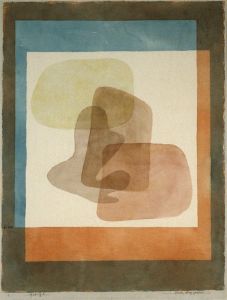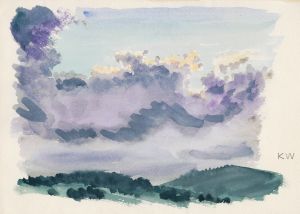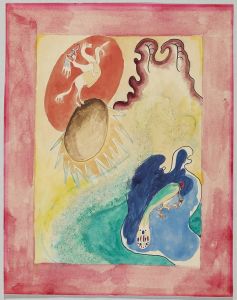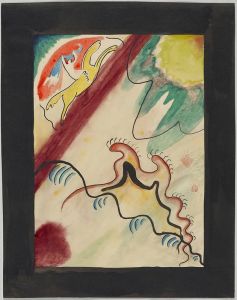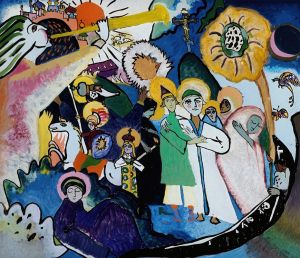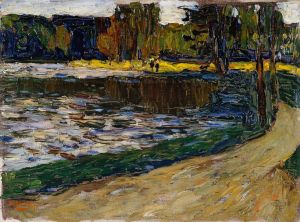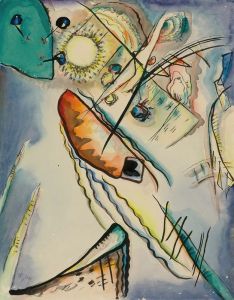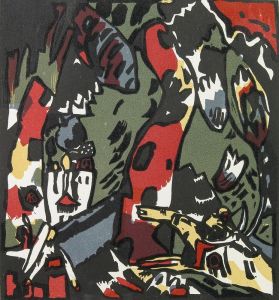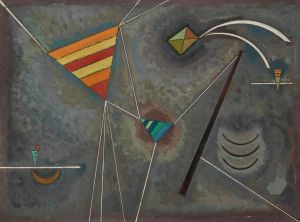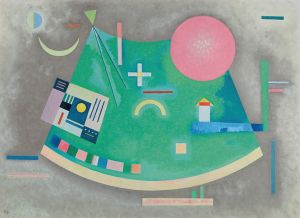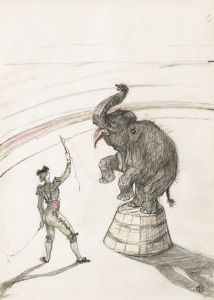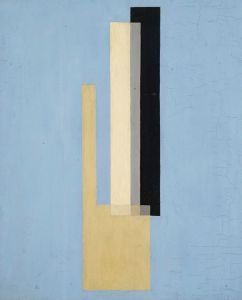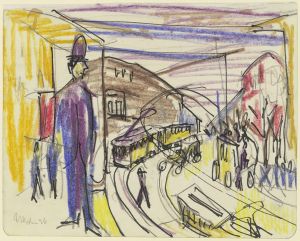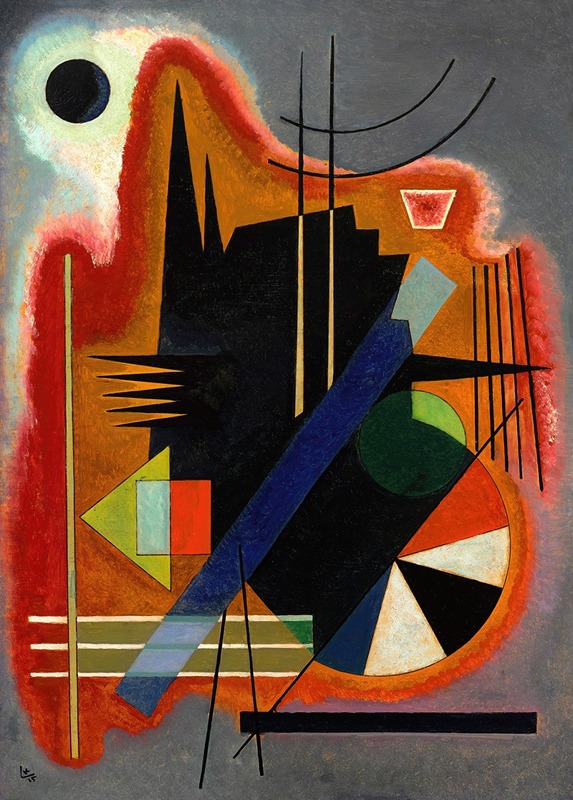
Einige Spitzen
A hand-painted replica of Wassily Kandinsky’s masterpiece Einige Spitzen, meticulously crafted by professional artists to capture the true essence of the original. Each piece is created with museum-quality canvas and rare mineral pigments, carefully painted by experienced artists with delicate brushstrokes and rich, layered colors to perfectly recreate the texture of the original artwork. Unlike machine-printed reproductions, this hand-painted version brings the painting to life, infused with the artist’s emotions and skill in every stroke. Whether for personal collection or home decoration, it instantly elevates the artistic atmosphere of any space.
Wassily Kandinsky, a pioneer of abstract art, created "Einige Spitzen" in 1927. The title, which translates to "Some Points" in English, reflects Kandinsky's interest in exploring geometric forms and their relationships within a composition. This work is part of his Bauhaus period, during which he was deeply engaged in teaching and creating art that emphasized the interplay of form, color, and line.
"Einige Spitzen" exemplifies Kandinsky's mature abstract style, characterized by a precise arrangement of geometric shapes, lines, and vibrant colors. During this time, Kandinsky was influenced by his theoretical writings, particularly his book Point and Line to Plane (1926), which delves into the psychological and emotional effects of basic visual elements. The painting reflects his belief in the spiritual and expressive potential of abstract art, as well as his interest in the scientific and mathematical principles underlying artistic composition.
The work employs a balanced yet dynamic composition, with sharp, angular forms juxtaposed against softer, circular elements. The use of color is deliberate and harmonious, showcasing Kandinsky's mastery of chromatic relationships. The painting's abstract nature invites viewers to interpret its meaning subjectively, aligning with Kandinsky's goal of evoking an emotional response rather than depicting a specific narrative or scene.
"Einige Spitzen" was created during Kandinsky's tenure at the Bauhaus school in Dessau, Germany, where he taught from 1922 to 1933. The Bauhaus was a hub for modernist innovation, and Kandinsky's work during this period reflects the school's emphasis on integrating art, design, and architecture. His paintings from this era often incorporate a sense of order and structure, influenced by the Bauhaus's focus on functionality and clarity.
The painting is held in a private collection, and its exact provenance is not widely documented. However, it remains an important example of Kandinsky's contribution to abstract art and his exploration of the relationships between visual elements. As with much of his work, "Einige Spitzen" demonstrates Kandinsky's commitment to pushing the boundaries of artistic expression and his belief in the transformative power of art.





